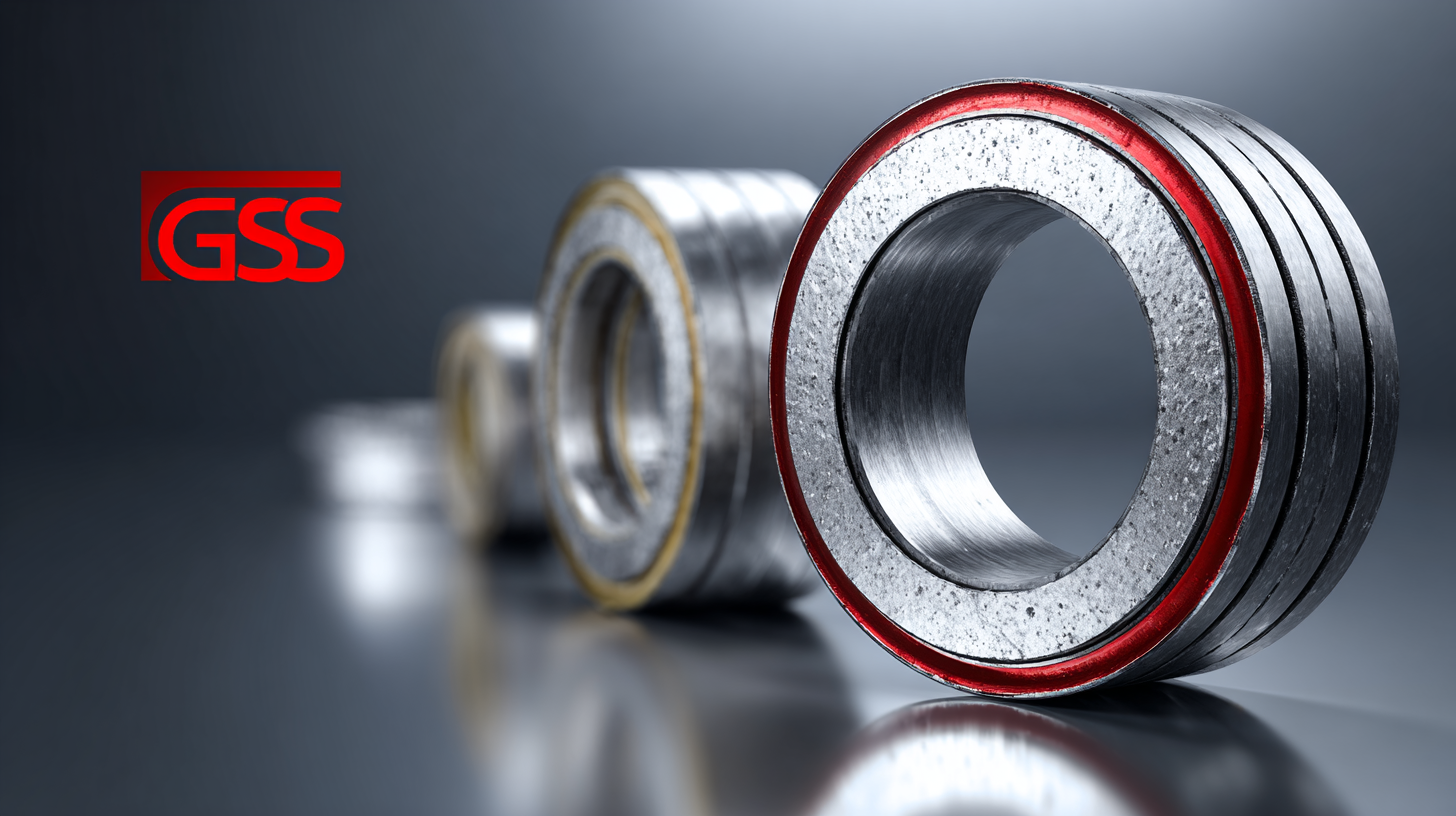Maximizing Value with Best Flexible Graphite Gaskets: After-Sales Support and Maintenance Cost Insights for a Sustainable Future
In today’s rapidly evolving industrial landscape, the pursuit of sustainable and cost-effective solutions has never been more critical. One such solution is the use of Flexible Graphite Gaskets, renowned for their exceptional durability and versatility in diverse applications. As companies strive to enhance operational efficiency while minimizing maintenance costs, understanding the value proposition of these gaskets becomes essential. This blog will delve into insights on after-sales support and maintenance strategies that can significantly extend the lifespan of Flexible Graphite Gaskets. We'll also provide practical tips to maximize their performance and reduce long-term expenses. By embracing these strategies, organizations can not only optimize their gasket usage but also contribute to a more sustainable future. Whether you are a facility manager, maintenance engineer, or procurement specialist, the knowledge shared here will empower you to make informed decisions that align with your sustainability goals.

Understanding the Importance of Flexible Graphite Gaskets for Sustainability
 Flexible graphite gaskets play a pivotal role in promoting sustainability across various industries, thanks to their durability and efficiency. As the flexible graphite market is projected to grow from USD 0.35 billion in 2025 to USD 0.45 billion by 2030, with a compound annual growth rate (CAGR) of 5.5%, the emphasis on these gaskets becomes increasingly significant. Their ability to minimize leakage and reduce energy loss directly contributes to environmental sustainability by ensuring more efficient operations and lowering greenhouse gas emissions.
Flexible graphite gaskets play a pivotal role in promoting sustainability across various industries, thanks to their durability and efficiency. As the flexible graphite market is projected to grow from USD 0.35 billion in 2025 to USD 0.45 billion by 2030, with a compound annual growth rate (CAGR) of 5.5%, the emphasis on these gaskets becomes increasingly significant. Their ability to minimize leakage and reduce energy loss directly contributes to environmental sustainability by ensuring more efficient operations and lowering greenhouse gas emissions.
The global gaskets market, which is expected to reach USD 48.18 billion by 2023 and grow at a CAGR of 4.01% from 2024 to 2031, highlights the rising demand for innovative gasket solutions like flexible graphite. As industries strive for sustainability, the demand for long-lasting and reliable sealing solutions is critical. Flexible graphite gaskets not only support the longevity of machinery and equipment—thereby reducing maintenance costs—but also align with both regulatory demands and corporate sustainability goals. By investing in these gaskets, companies can enhance their operational efficiency while contributing positively to the environment.
Key After-Sales Support Services to Enhance Gasket Lifespan and Performance
Key after-sales support services play a critical role in enhancing the lifespan and performance of flexible graphite gaskets. A recent report from the Gasket and Sealing Systems Manufacturers Association indicates that proper maintenance can extend gasket lifespan by up to 30%. Regular maintenance checks, including torque tightening and material inspections, ensure optimal sealing performance and prevent costly leaks.
When investing in high-quality flexible graphite gaskets, manufacturers must also prioritize technical support post-purchase. Providing customers with access to expert advice, readily available replacement parts, and training on proper installation techniques can significantly improve gasket performance. For instance, studies have shown that improper installation accounts for nearly 40% of gasket failures.
Analyzing Maintenance Costs: How to Optimize with Best Practices
When it comes to minimizing maintenance costs, the utilization of best flexible graphite gaskets can play a crucial role. According to a recent industry report by the International Journal of Applied Engineering Research, companies can save up to 30% in maintenance costs by opting for high-quality gasket materials that reduce leakage and wear. Graphite gaskets, known for their superior thermal stability and chemical resistance, outperform traditional options, contributing to lower long-term operational costs and improved system efficiency.
Tips for optimizing gasket performance include conducting regular inspections and employing proper installation techniques. Ensuring that gaskets are installed correctly can prevent common issues such as misalignment or inadequate sealing, which can lead to costly leaks and system failures. Additionally, investing in training for maintenance staff can promote adherence to best practices, further extending the lifespan of flexible graphite gaskets.
Furthermore, embracing a proactive maintenance schedule is paramount. By implementing condition monitoring technologies, companies can predict gasket performance and identify potential issues before they escalate. This approach reduces unscheduled downtime and maintenance expenses, thereby driving overall operational excellence and sustainability in the industry.

Real-World Case Studies: Successful Application of Graphite Gaskets
The application of best flexible graphite gaskets has proven to be instrumental in various industries, contributing to increased efficiency and sustainability. A significant case study involved a major oil refinery where the implementation of graphite gaskets resulted in a 30% reduction in maintenance costs. As per a report by the International Association of Oil & Gas Producers, the industry's focus on enhancing asset integrity has become paramount, with flexible graphite gaskets playing a key role in achieving tighter sealing and minimizing leakage, thereby promoting environmental sustainability.
Another compelling example comes from the chemical processing sector, where companies have reported that switching to high-quality graphite gaskets reduced downtime by approximately 25%. According to a recent study by the Chemical Engineering Department at a leading university, efficient sealing solutions like graphite gaskets not only improve operational reliability but also extend equipment lifespan, lowering overall operational costs. These real-world applications underscore the importance of investing in advanced sealing technologies as a means to maximize value and support sustainable practices within industry operations.
Future Trends: Innovations in Graphite Gasket Technology and Sustainability
The future of graphite gasket technology is bright, driven by sustainability and innovative practices that are reshaping the industry. As demand for environmentally friendly solutions grows, advancements in the production and application of flexible graphite gaskets are becoming increasingly prominent. These gaskets not only offer superior sealing capabilities but are also designed to reduce energy consumption and minimize waste, aligning with global sustainability goals. The integration of newer materials and manufacturing techniques is expected to enhance their performance while adhering to stringent environmental regulations.
In the broader context, industries are witnessing significant growth in related sectors such as PTFE and artificial graphite markets, indicating a robust market environment for gasket technology. The projected expansion of the artificial graphite market from $2.25 billion in 2025 to nearly $4.5 billion by 2033 highlights the ongoing innovation and demand for high-performance materials. As organizations prioritize sustainability, investments in advanced gasket technologies will play a critical role in achieving operational efficiency and long-term cost savings, ultimately contributing to a greener future in manufacturing and production.